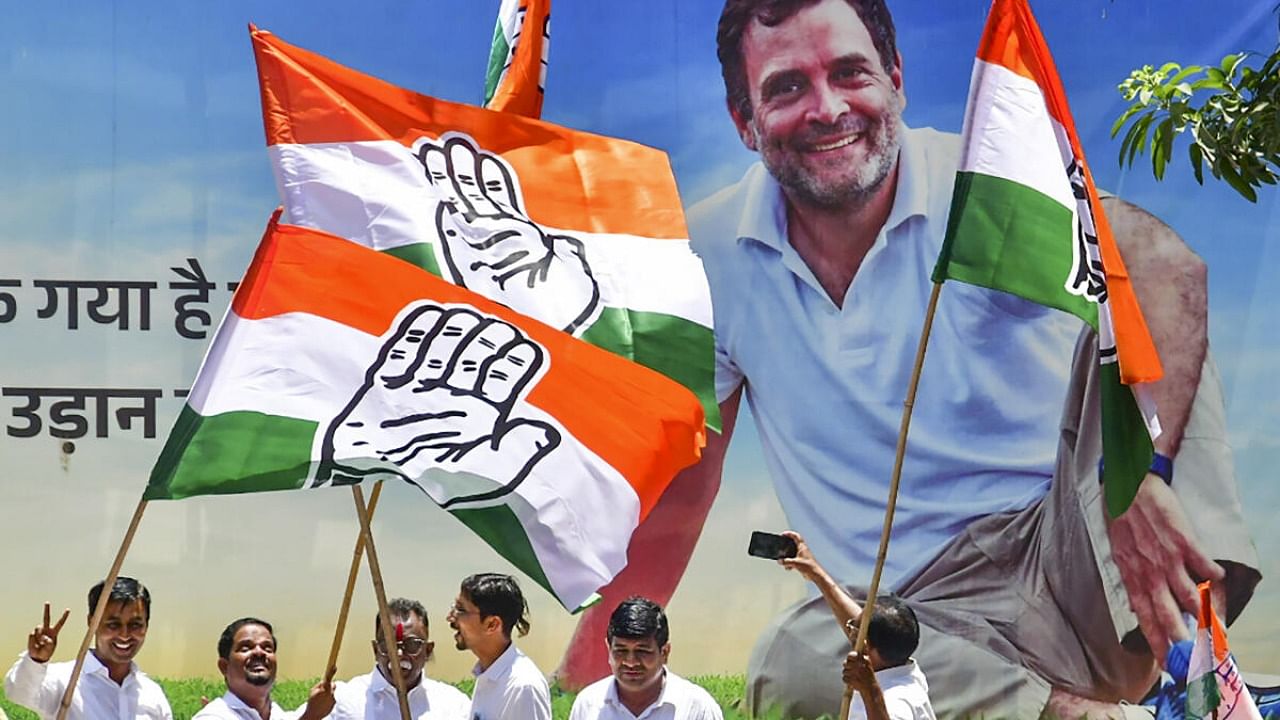
All major secular Opposition parties hailed the Congress’s victory in the Karnataka elections and laid great hopes for the 2024 Parliament polls. While DMK chief and Tamil Nadu Chief Minister M K Stalin said the land mass of the Dravidian family stands clear of the Bharatiya Janata Party (BJP), Samajwadi Party (SP) leader Akhilesh Yadav said that the results signalled the end of the BJP’s communal, corrupt, rich-oriented, socially-divisive, etc politics had begun. Similar observations were made by Trinamool Congress chief and West Bengal Chief Minister Mamata Banerjee, Nationalist Congress Party chief Sharad Pawar and Left parties.
Urban India with BJP
The BJP might have lost the Karnataka elections, but what cannot be ignored is that it polled nearly 36 per cent of the total votes, and continues to dominate the urban landscape.
Urban Karnataka predominantly voted for the BJP. It polled 45.7 per cent votes, whereas the Congress got 43 per cent in urban Karnataka. This despite some of the major cities in the state exhibiting the worst kind of urban development models.
In the recent past Bengaluru saw devastating flooding, snarling traffic jams have become everyday events, solid waste remains a challenge, etc — these should have contributed to the defeat of the BJP. However, the most affected flood area elected a BJP candidate as MLA. Of the seven Urban Bengaluru seats, five were won by the BJP.
Karnataka is now more than 50 per cent urban. However, the vote percentage in urban areas is far less than in rural Karnataka. Whereas it was 73 per cent in Karnataka, only 52 per cent of people came out to vote in Bengaluru.
Urban Apathy and Urbanisation
Urban apathy, as pointed out by the Chief Election Commissioner just before announcing the election date, emanates largely from the approach towards urbanisation.
The transformation in urban India from an industrial-led developmental model to a real estate service driven economy and the greater informalisation of the economy has thrown many people out from the process of combined planning futures.
The large working-class centres are now taken over by real estate development, and though the working-class numbers have increased substantially their bargaining strength, vis-à-vis their employers and the city administration, has virtually crumbled.
The middle classes still assert through their various associations and the social space of protests and city building has been taken over by the RSS-BJP combination that leads to a downfall of secular values.
Urban Middle Class
The RSS has been holding shakhas in public schools well before Basavaraj Bommai became Chief Minister; even during the Congress government’s time in the state. Likewise, the BJP moved from schools to holding yoga camps and calling gurus to sermonise the urban electorate.
Karnataka's urban middle class, much like their counterparts in other Indian urban centres, have a limited self-interest which is addressed by the BJP — the Congress has failed to occupy this space. It is because of this that even flood-hit areas have stood with the BJP.
Social media campaigns, which are very important in urban areas, was dominated by the BJP. The Congress was nowhere near.
The organisational prowess of the BJP dominated the urban areas where issues of people and their livelihoods could not dominate the election pattern. Apparently, this continues across urban India where the BJP's appeal particularly to the middle classes is quite high.
What needs to be done?
The process of urbanisation needs to be revisited in the states where non-BJP formations are ruling. A pro-people-centric approach will give more inroads into the urban population. The Congress which brought the 74th constitutional amendment must further strengthen it and ensure its smooth implementation. Likewise, ‘urban commissions’ must be formed to articulate the current process of urbanisation, and find out ways to come out of the techno-centric, capital-intensive city development models. Not only do these models create extreme forms of poverty, but they are also devoid of peoples’ participation.
The city for city-makers and space for people to mark their presence must be revisited. Social media as the only space should give way to more physical spaces where people start owning the city-making process.
Newer forms of urban livelihoods and habitats need to be discussed and created. Social housing for the urban poor is missing in the current discourse in a representative manner. All that is happening is real estate development with housing for the middle classes and the proliferation of slums around them. The urban push has been to build new cities and the city planners love to do that demanding a butter paper to carve out a new city. This is not required in the current situation. Building new cities is just like debt floating on the land and on roads with no buyers. Instead, the effort must be to work in the given cities with procedural tools for acupuncture, suturing, etc.
Migration is such an important area in urban dynamics. Rental housing with a proactive State policy can create liveable spaces for people in urban areas.
Lastly, in urban areas, it is also the ideological churning that needs to be developed. Combating the Hindutva agenda which is a combination of the ‘mob-elite, and technology’ must be countered with a combination of ‘bottom-up peoples’ participatory governance on models of love, compassion, and togetherness’ as enshrined in the Constitution of India.
Else, the joy emanating from the Congress’s victory may be short-lived as the BJP which has a far greater skill in managing elections in the urban areas will again come back with renewed strength.
(Tikender Singh Panwar is former deputy mayor of Shimla.)
Disclaimer: The views expressed above are the author's own. They do not necessarily reflect the views of DH.